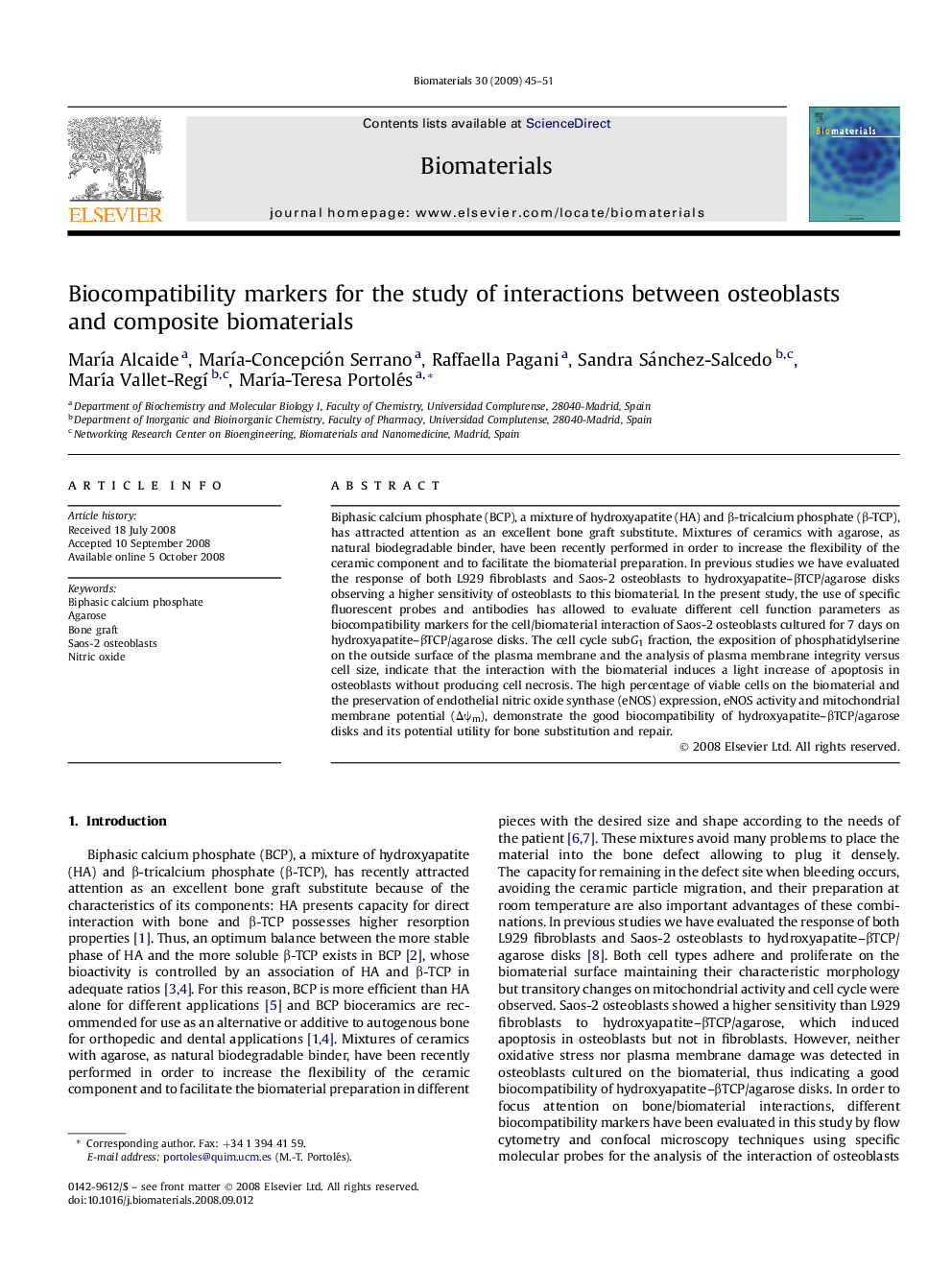| Article ID | Journal | Published Year | Pages | File Type |
|---|---|---|---|---|
| 9523 | Biomaterials | 2009 | 7 Pages |
Biphasic calcium phosphate (BCP), a mixture of hydroxyapatite (HA) and β-tricalcium phosphate (β-TCP), has attracted attention as an excellent bone graft substitute. Mixtures of ceramics with agarose, as natural biodegradable binder, have been recently performed in order to increase the flexibility of the ceramic component and to facilitate the biomaterial preparation. In previous studies we have evaluated the response of both L929 fibroblasts and Saos-2 osteoblasts to hydroxyapatite–βTCP/agarose disks observing a higher sensitivity of osteoblasts to this biomaterial. In the present study, the use of specific fluorescent probes and antibodies has allowed to evaluate different cell function parameters as biocompatibility markers for the cell/biomaterial interaction of Saos-2 osteoblasts cultured for 7 days on hydroxyapatite–βTCP/agarose disks. The cell cycle subG1 fraction, the exposition of phosphatidylserine on the outside surface of the plasma membrane and the analysis of plasma membrane integrity versus cell size, indicate that the interaction with the biomaterial induces a light increase of apoptosis in osteoblasts without producing cell necrosis. The high percentage of viable cells on the biomaterial and the preservation of endothelial nitric oxide synthase (eNOS) expression, eNOS activity and mitochondrial membrane potential (Δψm), demonstrate the good biocompatibility of hydroxyapatite–βTCP/agarose disks and its potential utility for bone substitution and repair.
